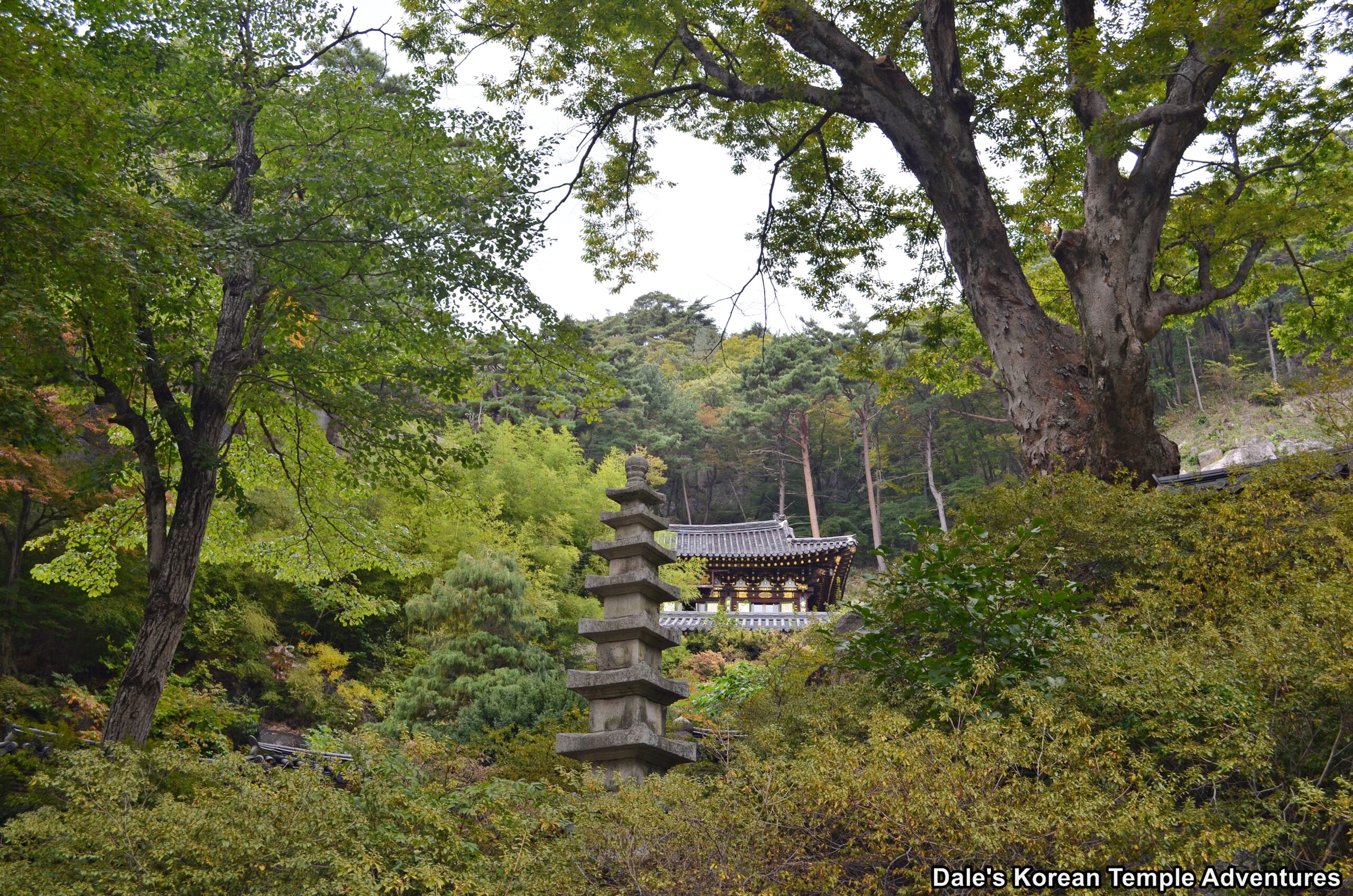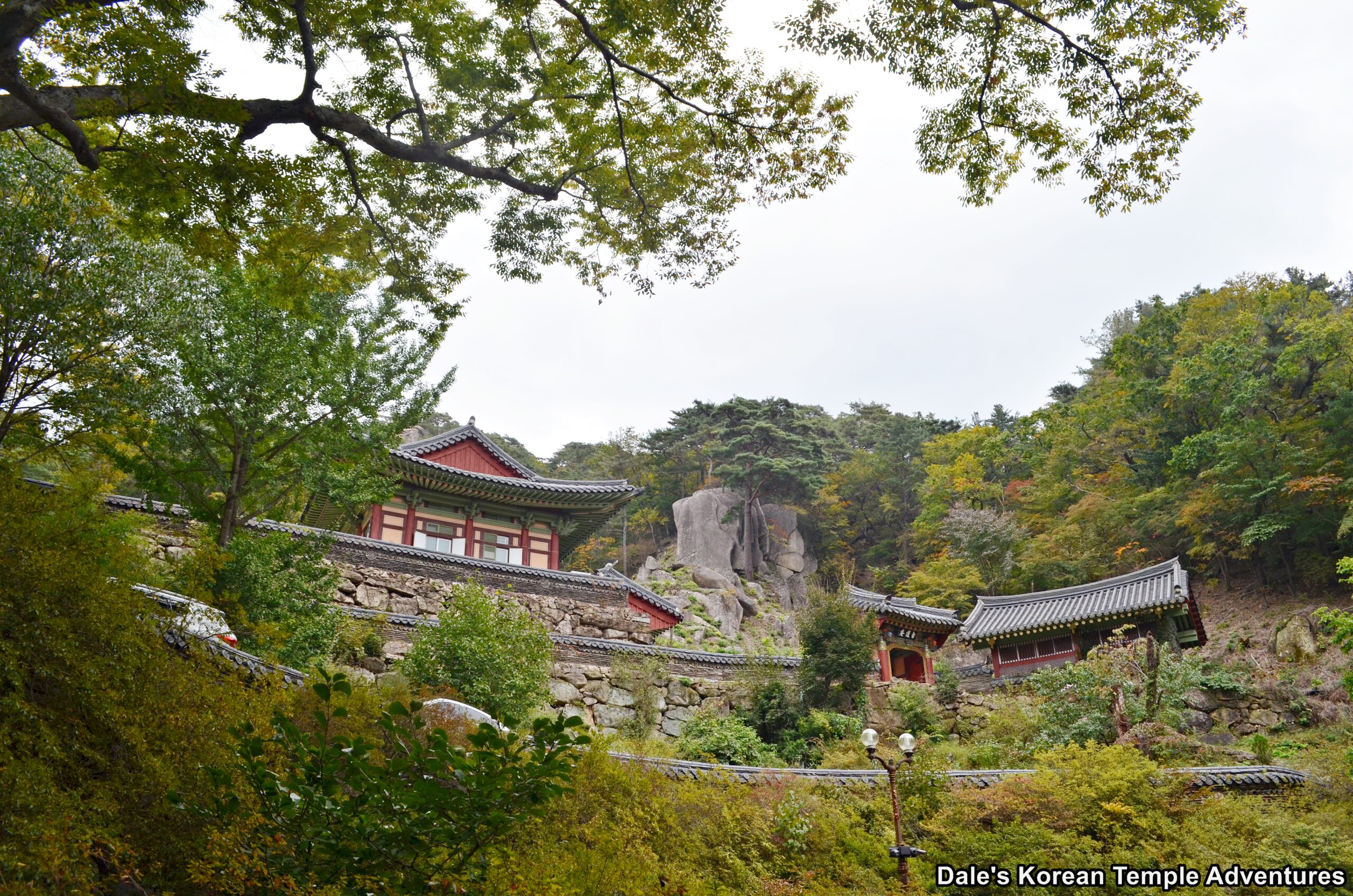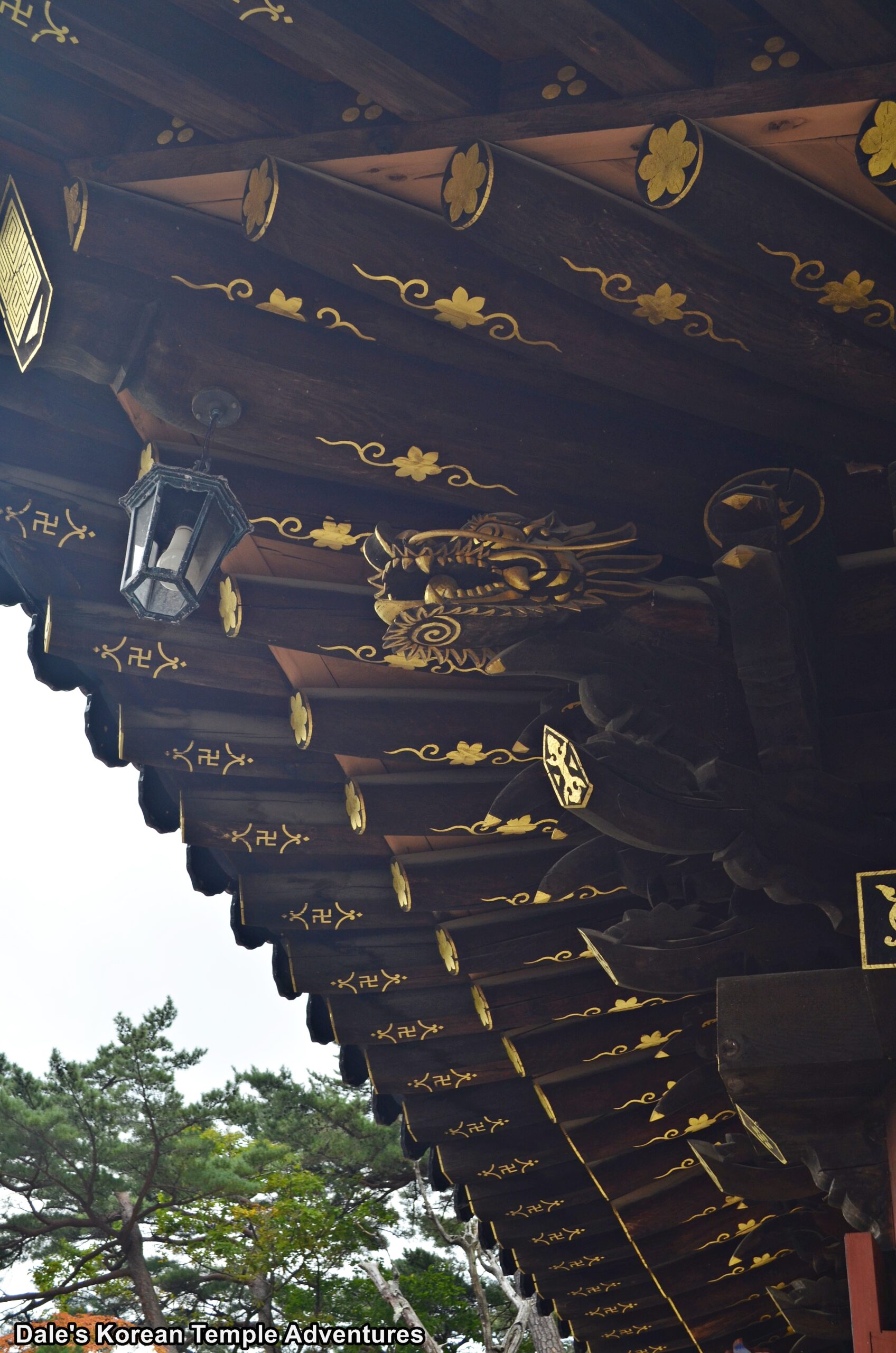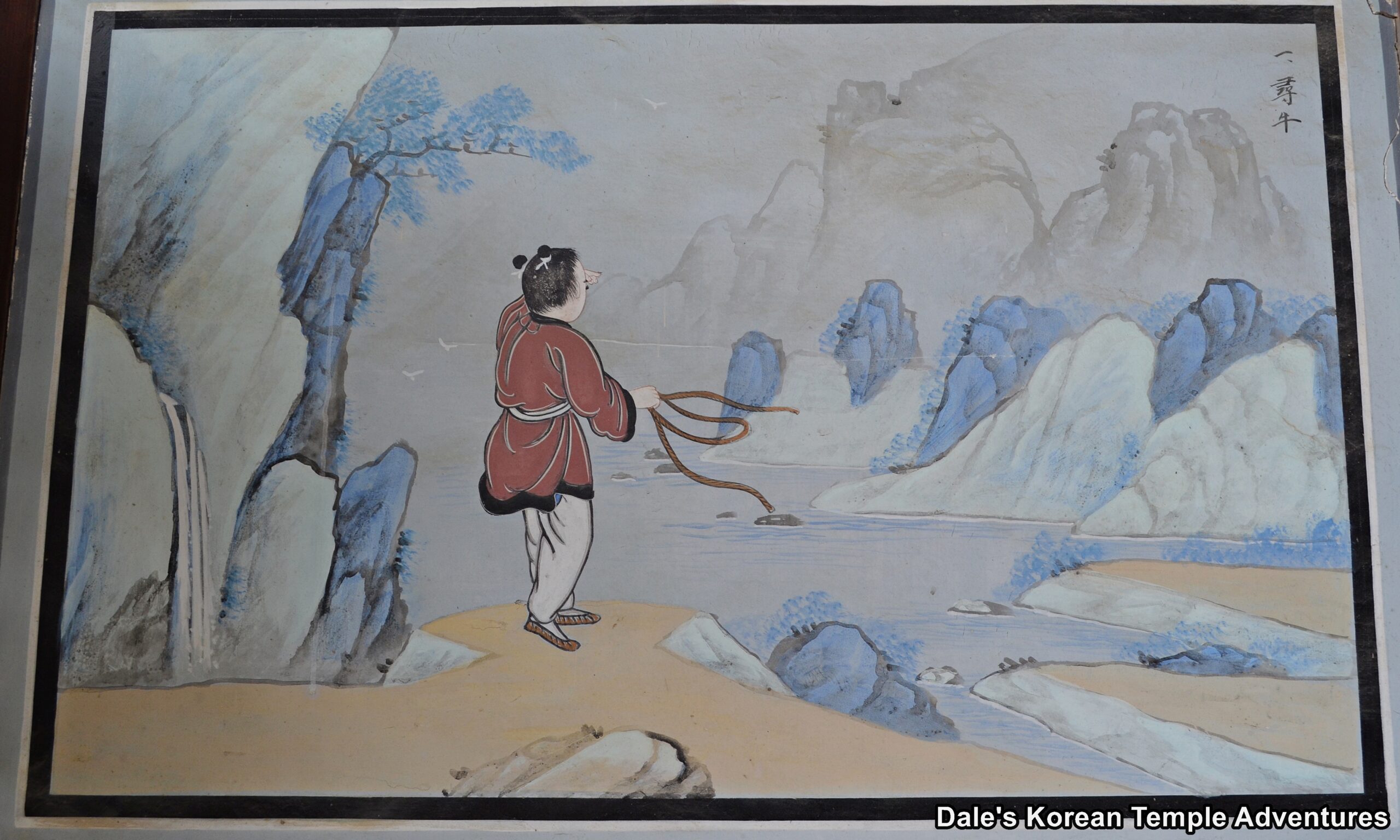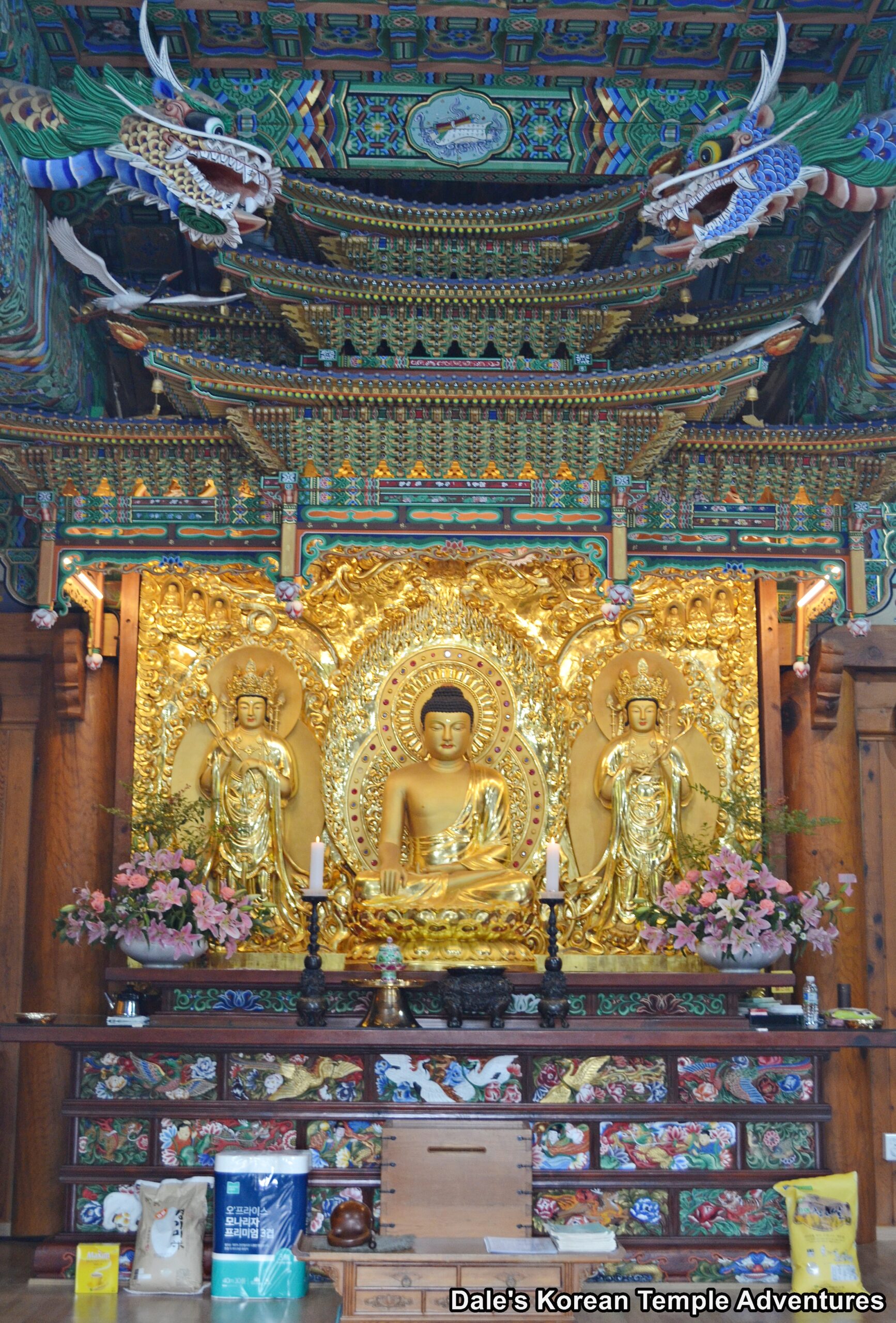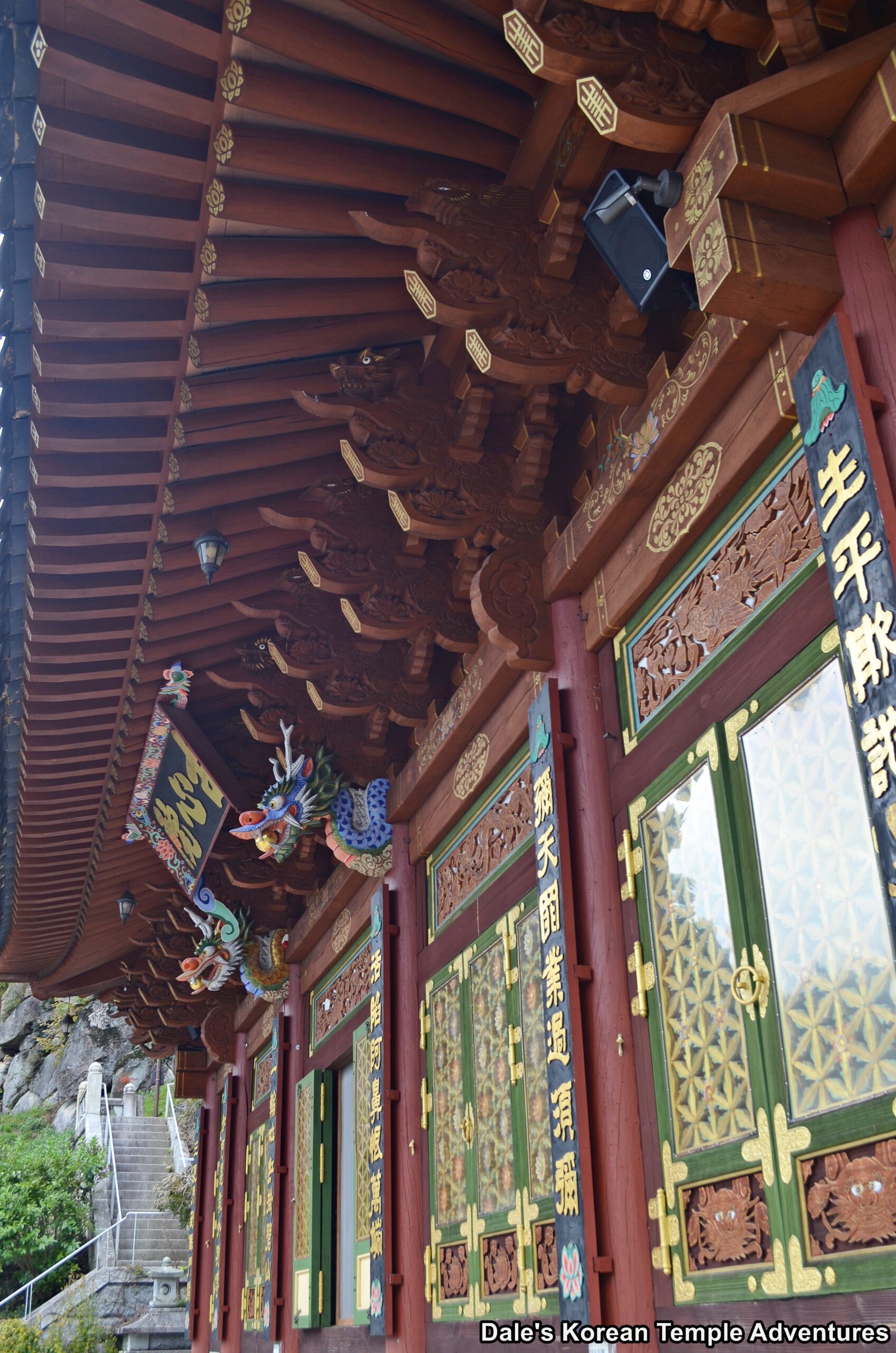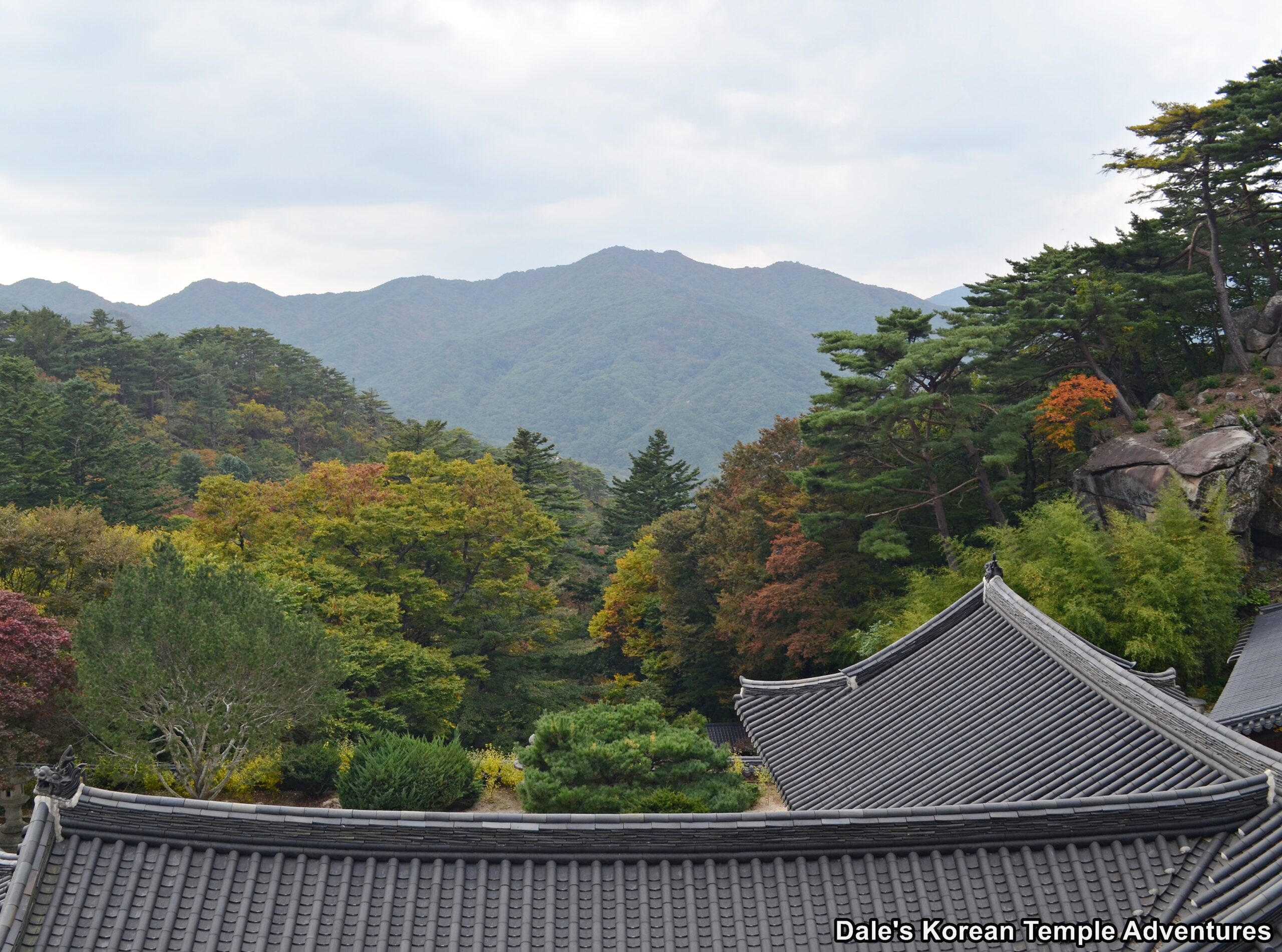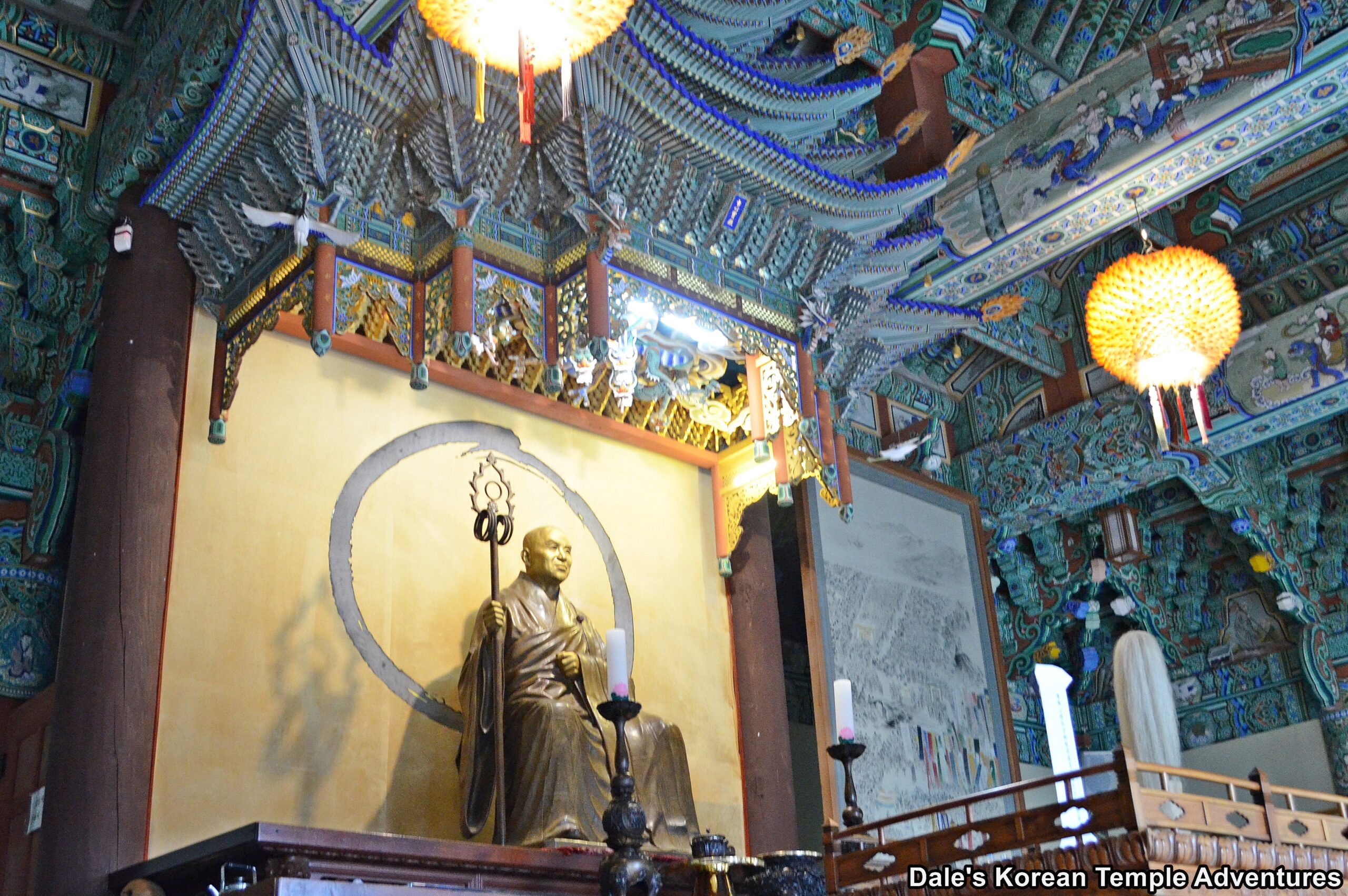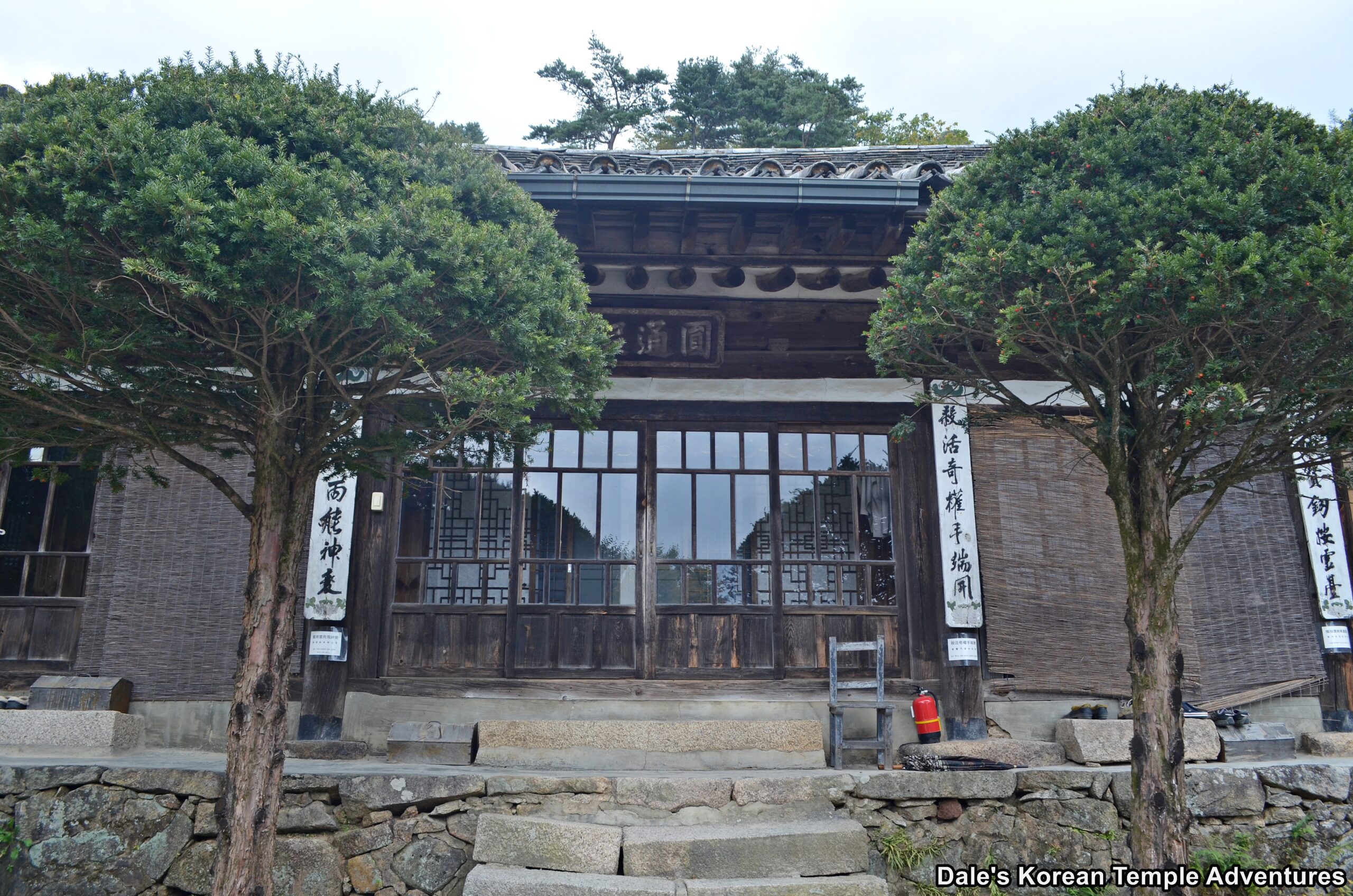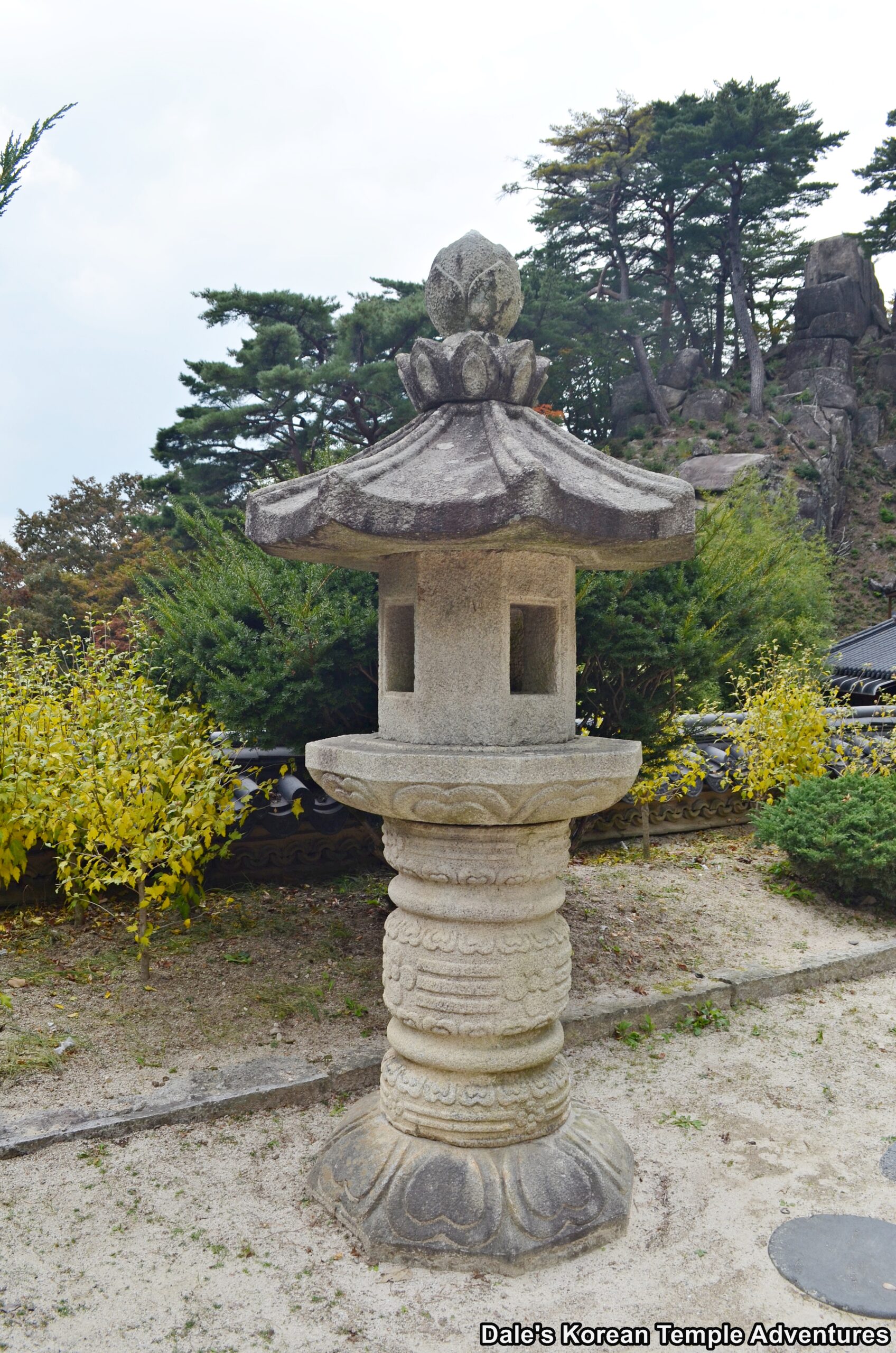Baengryeonam Hermitage – 백련암 (Hapcheon, Gyeongsangnam-do)
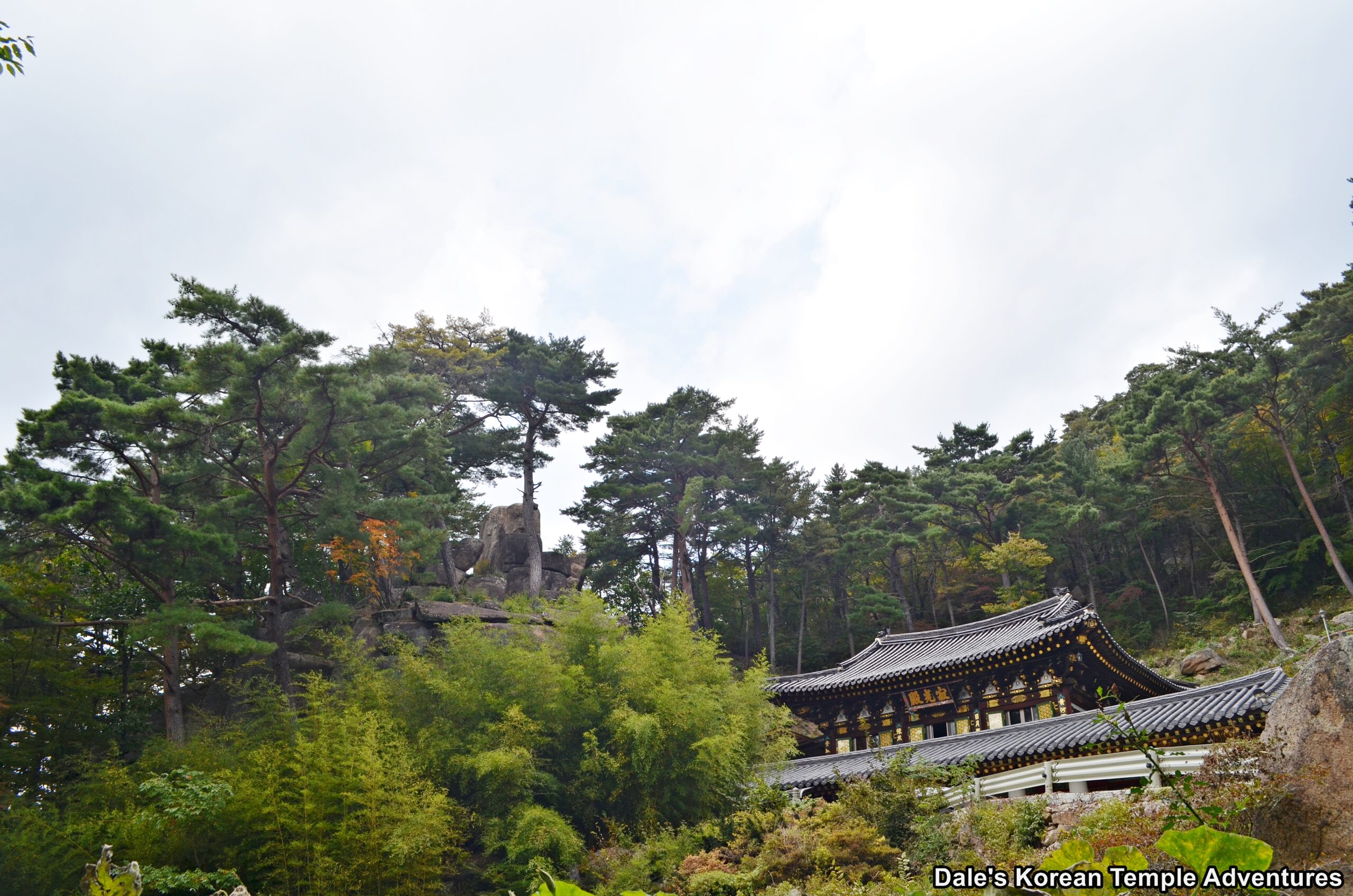
Hermitage History
Baengryeonam Hermitage is located on the Haeinsa Temple grounds in Hapcheon, Gyeongsangnam-do. Additionally, it’s situated the furthest east of all the hermitages on the Haeinsa Temple grounds. Also, Baengryeonam Hermitage is the highest in elevation on Mt. Gayasan of the Haeinsa Temple hermitages, as well. It’s unknown as to when the hermitage was first built, and it’s also unknown who first built Baengryeonam Hermitage. We do know, however, that the hermitage was reconstructed in 1605 by the monk Soam, who was a disciple of Seosan-daesa (1520-1604). Legend has it that during the Imjin War (1592-98), when the Japanese were invading the Korean Peninsula in 1592, that Soam protected Haeinsa Temple through his reputation alone. The Japanese wanted to invade, and were even occupying the neighbouring hillside at Haeinsa Temple, but they didn’t dare invade the temple. Sounds a little far-fetched to me, but that’s the legend all the same.
More recently, the hermitage became famous for being the home hermitage to the monk Seongcheol (1912-93). Not only was Seongcheol the Supreme Patriarch of the Jogye Order, but he was also believed to be a living Buddha in Korea because of his extremely austere lifestyle. And since his passing, and over the past couple of years, the hermitage has undergone extensive renovations, rebuilds, and reconstruction.
Hermitage Layout
You first make your way towards Baengryeonam Hermitage past a cluster of hermitages. Baengryeonam Hermitage is the last hermitage up this road that also hosts three other Haeinsa Temple hermitages. The walk is beautiful and ends at the Baengryeonam Hermitage parking lot. To your right, you’ll see a grouping of buildings that include the monks’ dorms. But it’s to the left, and around the winding road, that you want to go.
In a forested area, and beneath a large tree, you’ll find a modern seven-story stone pagoda. Keep heading up the road and past the pagoda. Just beyond the trees and the pagoda is a shrine hall with a natural wood finish that is decorated with gold trim. Even the dragons up near the eaves are golden, as well. The panels surrounding the exterior walls are adorned with beautiful, yet simplistic, Shimu-do (Ox-Herding Murals). Taking a peek inside the Daeung-jeon Hall, and past the golden latticework, you’ll notice a triad of statues on the main altar. Seated in the centre of this triad is a statue of Seokgamoni-bul (The Historical Buddha). Standing on either side of Seokgamoni-bul are statues dedicated to Munsu-bosal (The Bodhisattva of Wisdom) and Bohyeon-bosal (The Bodhisattva of Power). The triad rests under an ornate datjib (canopy) with two inward looking dragons (one gold and one blue).
To the right rear of the Daeung-jeon Hall is the Dokseong-gak Hall. The shaman shrine hall is perched above the rest of the hermitage grounds and has just enjoyed a beautiful new coat of dancheong around its exterior walls. There is another shrine hall that’s situated above the rest of the temple grounds just like the Dokseong-gak Hall; but instead of being dedicated to a shaman deity, it’s a Josa-jeon Hall, which honours and commemorates famous monks that once called Baengryeonam Hermitage home. However, to get to this diminutive Josa-jeon Hall, you’ll need to make your way back down the stairs you first came up and head east towards the administrative office. It’s to the left of what looks to be a re-purposed elevated shrine hall that you’ll find the stairs that lead up to the Josa-jeon Hall.
As for the large, seemingly, re-purposed shrine hall, this shrine hall is now dedicated to commemorate the monk Seongchol. When I visited, the shrine hall was still under construction from the floorboards out in front of the shrine hall, to the murals adorning the exterior of this hall. The only thing that wasn’t under construction was the interior of this shrine hall dedicated to Seongchol. Stepping inside this unpainted building, you’ll find a large bronze statue dedicated to Seongchol on the main altar under a large blue and green canopy. I’ve never seen such a large shrine hall dedicated to a single monk at any of the historic temples in Korea and this includes the shrine hall dedicated to Samyeong-daesa (1544-1610) at Jikjisa Temple and the Pyochungsa shrine hall at Daeheungsa Temple. This shrine hall at Baengryeonam Hermitage is definitely a statement.
To the right of the shrine hall dedicated to Seongchol, and past the administrative office, you’ll find an older Yosachae (monks’ dorms), which was presumably used by Seongchol with how it’s preserved and honoured. There are two additional buildings in the area. One appears to be another shrine hall, but it was under construction when I visited. And the other building appears to be more monks’ dorms.
How To Get There
To get to Baengryeonam Hermitage, you’ll first need to get to Haeinsa Temple. And to get to Haeinsa Temple, you’ll first need to get to the Seobu Bus Terminal in Daegu. From here, you can catch an express bus to Haeinsa Temple. This express bus departs every 40 minutes, and the bus ride lasts about an hour and a half. After arriving at Haeinsa Temple, you’ll need to head south from the Iljumun Gate. You’ll pass by a collection of biseok (stele) and budo (stupa). There is a mountain road with a large rock and sign markers that point you towards the four hermitages in this area of the Haeinsa Temple grounds. You’ll first pass by both Huirangdae Hermitage and Jijokam Hermitage along the way. Keep heading east until you eventually come to Baengryeonam Hermitage. In total, the walk from Haeinsa Temple to Baengryeonam Hermitage takes about 36 minutes, or 1.4 km, up a mountainside road.
Overall Rating: 5/10
Baengryeonam Hermitage is one of the most beautifully situated hermitages on the Haeinsa Temple grounds. In addition to all of its natural beauty, there are several shrine halls that visitors can enjoy and explore; however, it’s yet to be determined just how much of a change the hermitage will undergo, as there is a lot of construction currently taking place at Baengryeonam Hermitage. As for the shrine halls that are open to the public, the natural wood and gold trimmed Daeung-jeon Hall is definitely a highlight, as are the Dokseong-gak Hall and the Josa-jeon Hall. But arguably the greatest highlight to Baengryeonam Hermitage is the large shrine hall dedicated to the master monk, Seongchol. Baengryeonam Hermitage is definitely one of the top three hermitages at Haeinsa Temple.
